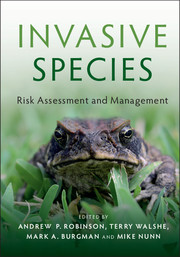Soybean plants exposed POST to 2,4-D can have reduced seed yield dependingon the dose and time of exposure, but it is unclear how 2,4-D affectsspecific yield components. Objectives were to quantify soybean injury,characterize changes in seed yield and yield components of soybean plantsexposed to 2,4-D, and determine if seed-yield loss can be estimated fromvisual assessment of crop injury. Ten rates (0, 0.1, 1.1, 11.2, 35, 70, 140,280, 560, and 2,240 g ae ha−1) of 2,4-D were applied to Becksbrand 342 NRR soybean at three soybean growth stages (V2, V5, or R2). Thesoybeans were planted near Lafayette, IN and Urbana, IL in 2009 and 2010 andnear Fowler, IN in 2009. Twenty percent visual soybean injury was caused by29 to 109 g ha−1 2,4-D at 14 d after treatment (DAT) and 109 to245 g ha−1 at 28 DAT. Nonlinear regression models were fit todescribe the effect of 2,4-D on seed yield and yield components of soybean.Seed yield was reduced by 5% from 87 to 116 g ha−1 and a 10%reduction was caused by 149 to 202 g ha−1 2,4-D at allapplication timings. The number of seeds m−2, podsm−2, reproductive nodes m−2, and nodes m−2were the most sensitive yield components. Path analysis indicated that seeds m−2, pods m−2, main stem reproductive nodes m−2, and main stem nodes m−2 were the mostinfluential yield components in seed-yield formation. Seed-yield loss wassignificant (P < 0.0001) and highly correlated (R2 = 0.95 to 0.99) to visual soybean injury ratings. A 10%seed-yield loss was caused by 35% soybean injury observed at 14 DAT, whereasa 10% seed-yield loss was a result of 40, 19, and 15% soybean injuryobserved at 28 DAT when soybean was exposed to 2,4-D at the V2, V5, and R2growth stages, respectively.

